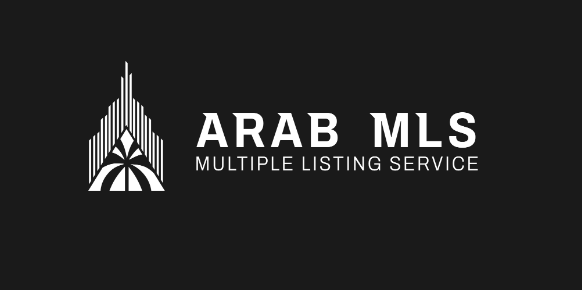The journey of selling a home is a significant undertaking for any homeowner. While the headline-grabbing figure is always the asking price, the number that truly matters to a seller is the amount of money they will receive after all costs associated with the transaction have been paid. This figure, known as the net proceeds, is the ultimate measure of their financial outcome. For real estate professionals, providing a clear, realistic picture of these net proceeds is not just a courtesy; it is a fundamental component of building trust, managing expectations, and ultimately, winning and successfully closing a listing.
In the past, calculating estimated net proceeds involved manual compilation of various potential costs – a process that could be time-consuming, prone to error, and difficult to update swiftly as market conditions or strategic decisions shifted. Fortunately, modern real estate technology offers powerful solutions, prominent among which are MLS (Multiple Listing Service) integrated widgets designed specifically to estimate a seller’s net proceeds on sale. These tools represent a significant advancement, enabling agents to deliver crucial financial insights to their clients efficiently and transparently.
Understanding the Tool
At its core, an MLS net proceeds widget is a digital calculation tool that leverages access to relevant real estate data, often pulling in typical local costs and fees associated with a property transaction, to provide an estimate of the cash a seller can expect to receive at closing. These widgets are typically offered by real estate software providers, integrated directly into agent dashboards, CRM systems, or even embeddable on agent or brokerage websites. Their connection, either direct or indirect, to MLS data streams allows them to incorporate localized factors that influence closing costs.
The functionality varies depending on the specific widget, but the general principle remains consistent: input key variables related to the potential sale, and the widget calculates an estimated net amount. This moves beyond a simple gross sale price minus mortgage payoff calculation, incorporating the myriad of expenses that reduce the final figure deposited into the seller’s bank account.

The Seller’s Perspective
From a homeowner’s vantage point, selling a property is often tied to future financial goals – perhaps funding the purchase of a new home, financing a child’s education, funding retirement, or reinvesting. Knowing the approximate net proceeds is critical for their planning. An offer of 500,000 might sound appealing on the surface, but if closing costs, agent commissions, taxes,andremainingmortgagedebtsignificantlyreducethatto450,000 or less, it fundamentally changes the seller’s financial equation and their ability to achieve those subsequent goals.
Sellers often approach the process with a mix of excitement and anxiety. While they are eager to see how much their home is worth, they may not fully grasp the layers of expenses that will be deducted from the final sale price. This is where the agent’s role becomes vital – demystifying the process and providing clarity. A seller equipped with a realistic estimate of their net proceeds feels more in control, can make informed decisions when evaluating offers, and can plan their next steps with greater confidence. Failure to provide this clarity upfront can lead to unwelcome surprises and disappointment later in the process, potentially damaging the agent-client relationship.
Deconstructing the Calculation – How These Widgets Operate
While the internal algorithms of each widget may differ, the fundamental calculation involves subtracting anticipated expenses from the potential gross sale price. The inputs typically required include:
- Estimated Sale Price: This is often the starting point, perhaps based on a Comparative Market Analysis (CMA) or an actual offer received.
- Outstanding Mortgage Balance(s): Any existing loans secured by the property must be paid off at closing.
- Real Estate Commission: This includes the commission for both the listing agent’s brokerage and the buyer’s agent’s brokerage, usually expressed as a percentage of the sale price.
- Closing Costs: This is a broad category encompassing various fees, which can vary significantly by location and even specific service providers. Common examples include:
- Title Insurance Fees (Owner’s and Lender’s policies)
- Escrow Fees
- Recording Fees
- Transfer Taxes (often split between buyer and seller, or paid by one party depending on local custom/law)
- Attorney Fees (if applicable in the jurisdiction)
- Prorated Property Taxes (the seller is typically responsible for taxes up to the closing date)
- Prorated Homeowners Association (HOA) Dues or Fees
- HOA Document Fees
- Specific Inspection Fees (e.g., septic, well, lead-based paint, depending on local requirements or contract terms)
- Potential Seller Concessions: If the seller agrees to contribute towards the buyer’s closing costs or make specific repairs, these amounts reduce the seller’s net proceeds.
- Other Potential Expenses: This might include costs for staging, pre-listing repairs, or other agreed-upon items.
The widget aggregates these inputs and performs the subtraction, presenting the estimated net proceeds. Many sophisticated widgets allow for customization, enabling the agent to adjust percentages and specific fees based on negotiated terms or known local variations, thereby increasing the estimate’s accuracy.
Advantages for the Real Estate Professional
Implementing and utilizing MLS net proceeds widgets offers numerous benefits for real estate agents looking to enhance their service and efficiency:
- Enhanced Professionalism and Trust: Providing a clear, data-driven estimate demonstrates competence and transparency. It positions the agent as a knowledgeable advisor who understands the financial complexities of selling. This proactive approach builds trust with the seller from the outset.
- Competitive Edge: During a listing presentation, showing a potential client a detailed, easy-to-understand breakdown of their potential net proceeds can be a powerful differentiator. It shifts the conversation from just the list price to the actual financial outcome, which is what truly resonates with the seller.
- Efficient Expectation Management: By presenting a realistic net proceeds figure early on, agents can effectively manage seller expectations regarding the financial results of the sale. This helps prevent surprises later and facilitates smoother negotiations when offers are received.
- Time Savings: Manual calculations are tedious and time-consuming. A widget automates this process, freeing up the agent’s time to focus on other critical aspects of marketing and selling the property. Updates to the estimate (e.g., when an offer comes in) can be generated almost instantly.
- Improved Communication: The visual output from a widget often provides a clear, organized summary that is easy for sellers to understand. This serves as an excellent talking point and reference document throughout the selling process.
- Data-Driven Advice: Integrating with MLS or providing access to typical local costs allows the agent to back up their estimates with relevant market data, making their advice more credible and grounded in reality.
Benefits for the Seller
While the agent gains efficiency and a professional edge, the primary beneficiary of these tools is the seller:
- Financial Clarity: The most significant benefit is providing the seller with a clear, understandable picture of their financial position after the sale. This removes much of the guesswork and anxiety associated with the process.
- Informed Decision-Making: With a reliable estimate of net proceeds, sellers can make more informed decisions about pricing strategies, evaluating offers, negotiating terms, and understanding the direct financial impact of each choice.
- Effective Planning: Knowing the approximate amount they will receive allows sellers to confidently plan their next steps, whether it’s budgeting for a move, planning renovations on a new property, or making other financial arrangements.
- Reduced Stress: Uncertainty is a major source of stress. Providing a clear financial roadmap helps alleviate some of that stress, making the selling experience smoother and more positive.
Critical Considerations and Limitations
While incredibly useful, it is paramount for real estate professionals and their clients to understand that the output of these widgets is always an estimate. Several factors contribute to this:
- Variability of Costs: Many closing costs are not fixed. Title insurance rates, escrow fees, attorney fees, and even recording fees can vary depending on the chosen service providers and the specifics of the transaction. Transfer taxes can change, and prorations depend on the exact closing date.
- Negotiated Terms: The final purchase agreement will dictate specific costs, such as who pays for certain inspections or reports, whether there are seller concessions towards closing costs, or if specific repairs are required (and who pays for them). The widget’s initial estimate might not reflect these later negotiated terms.
- Unexpected Issues: During inspections or the title search, unexpected issues can arise that require remediation or resolution, incurring additional costs not factored into the initial estimate.
- Proration Adjustments: Taxes, HOA dues, and other prorated items are calculated based on the exact closing date, which can shift during the process.
- Lender Requirements: The buyer’s lender might impose specific requirements or fees that indirectly impact the seller, though this is less common than direct seller costs.
Therefore, agents must communicate to sellers that the figure provided by the widget is an estimate based on typical or anticipated costs. The final net proceeds will only be definitively known once the final Closing Disclosure (CD) or settlement statement is prepared by the closing agent (escrow officer, title company, or attorney) shortly before closing. The widget’s purpose is to provide a strong, educated projection for planning and negotiation purposes, not a guarantee of the exact final amount. Agents should use the widget as a guide and supplement it with a detailed discussion of potential variables and the process leading to the final settlement statement. Including a clear disclaimer on any generated reports is highly advisable.

Integrating the Widget into Your Workflow
Real estate professionals can strategically integrate net proceeds widgets at various stages of the selling process:
- Listing Presentation: Use the widget to show potential sellers a realistic financial outcome based on the proposed listing price and typical costs. This adds significant value to the presentation.
- Evaluating Offers: When an offer is received, quickly generate a net proceeds estimate based on the offer price and proposed terms (like seller concessions) to help the seller compare offers financially.
- Client Communication: Provide updated estimates as terms change or the closing date approaches. This keeps the seller informed and helps manage expectations proactively.
- Online Presence: Some widgets can be embedded on an agent’s website, allowing potential sellers to get a preliminary estimate themselves, acting as a lead generation tool.
Conclusion
In the complex world of real estate, clarity and transparency are paramount. MLS integrated net proceeds widgets are powerful tools that empower real estate professionals to provide sellers with the critical financial information they need to navigate the sales process confidently. By automating the estimation of the take-home amount after all expenses, these widgets save agents time, enhance their professional standing, and most importantly, help sellers make informed decisions based on a realistic understanding of their financial outcome. While always emphasizing that the result is an estimate, leveraging these tools effectively strengthens the agent-client relationship, streamlines communication, and contributes to a more positive and successful selling experience for everyone involved. As technology continues to evolve, tools that translate complex financial details into understandable figures will remain invaluable assets for the modern real estate professional.
Frequently Asked Questions (FAQs)
1. What exactly are “net proceeds” when selling a home?
Net proceeds refer to the actual amount of money a seller receives after all expenses related to the sale have been paid. This is different from the gross sale price, as it accounts for costs such as mortgage payoffs, real estate commissions, closing fees, taxes, and any other negotiated expenses. It’s the final figure deposited into the seller’s account.
2. Why is knowing the estimated net proceeds important for a home seller?
Knowing the estimated net proceeds is crucial for financial planning. It helps sellers understand the true financial outcome of their sale, enabling them to budget for their next steps, such as purchasing another property, funding renovations, or meeting other financial goals. It also provides a realistic benchmark when evaluating offers.
3. What is an MLS Net Proceeds Widget?
An MLS Net Proceeds Widget is a digital tool, often integrated with real estate platforms or MLS data, that calculates an estimated net amount a seller might receive from a home sale. It uses inputs like the potential sale price and various expected costs to provide a projection of the money left after all transaction expenses are covered.
4. How accurate are the net proceeds estimates provided by these widgets?
While these widgets are powerful tools for estimation, it’s important to understand they provide an estimate based on anticipated costs. The accuracy depends on the quality of the input data and the widget’s ability to factor in variable local fees and potential negotiated terms. The final net proceeds will only be definitively calculated on the final Closing Disclosure or settlement statement near the closing date.
5. What types of costs are typically included in the widget’s calculation?
The calculation usually includes major costs like the outstanding mortgage balance, real estate commissions, and common closing expenses such as title insurance, escrow fees, recording fees, and transfer taxes. It may also account for prorated property taxes, HOA dues, and potential seller concessions agreed upon during negotiations.
6. Can the estimated net proceeds amount change during the selling process?
Yes, the estimate can change. The most significant factor is the final negotiated sale price. However, changes can also occur due to negotiated seller concessions, unexpected repair costs arising from inspections, adjustments to prorated taxes or fees based on the exact closing date, or variations in third-party service provider fees (like title or escrow).
7. How does my real estate agent use a net proceeds widget to help me?
Your agent uses the widget to provide you with a clear, data-driven estimate of your potential financial outcome from the sale. They can generate estimates during the listing presentation based on proposed pricing, update calculations when offers are received to help you compare them financially, and provide revised estimates as the transaction progresses, ensuring you stay informed about your potential net return.
8. Does using this widget guarantee I will receive the estimated amount?
No, the widget’s output is an estimate and not a guarantee. The final amount you receive will depend on the actual sale price, final negotiated terms in the purchase agreement, and the precise costs determined by the closing agent based on the services used and the specific closing date. The widget is a valuable tool for planning and negotiation, but the final figure is confirmed at closing.













